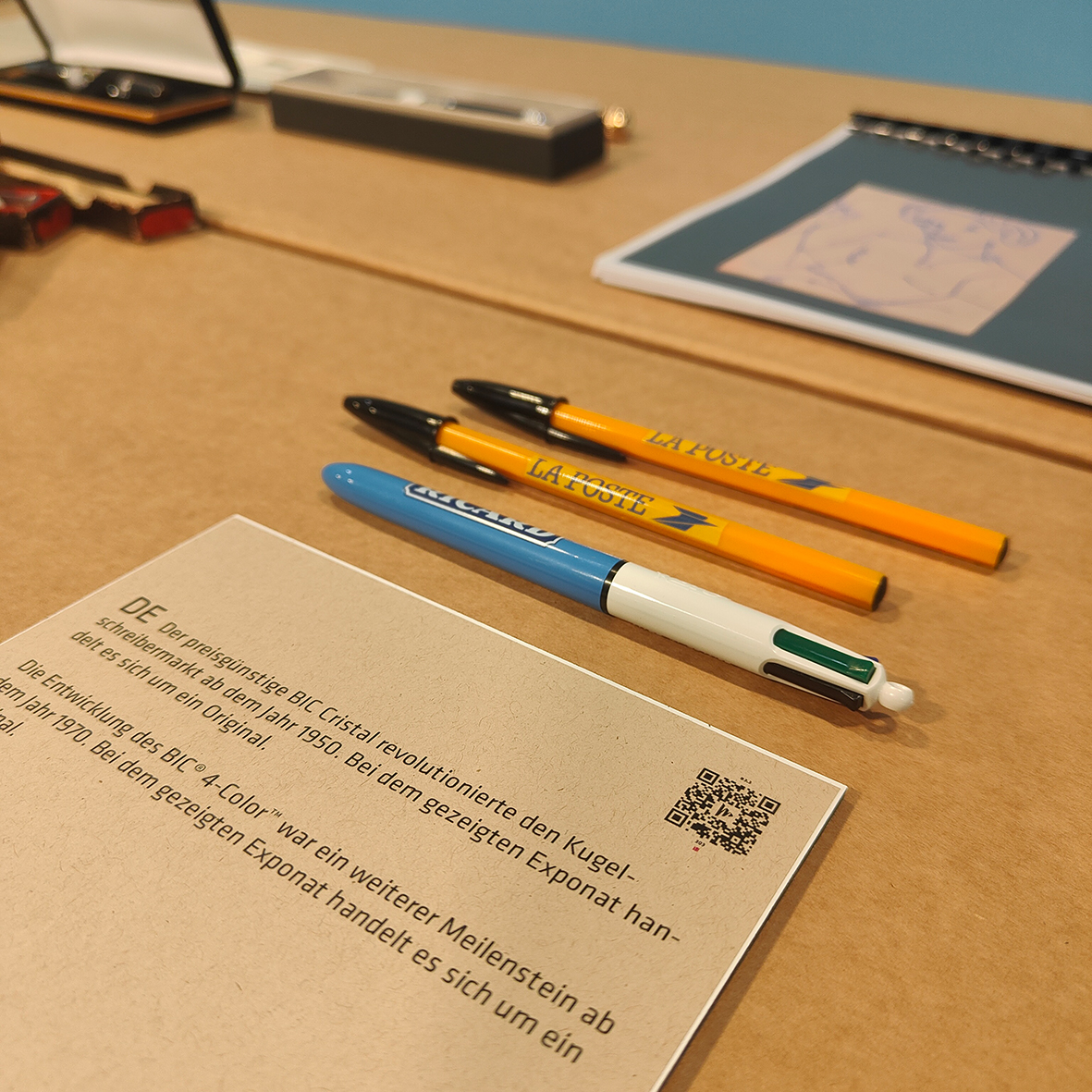Throughout human history, communication and writing have continuously evolved from primitive cave paintings to modern writing instruments. A decisive step forward was the invention of the ballpoint pen in 1938 by Laszlo Biro, which revolutionized writing and now has become a ubiquitous part of our everyday communication.
Human civilization has always been evolving its methods of communication and of keeping records, from cave paintings to today’s electronic tablets. With the discovery of materials for painting and writing, humans laid the foundations for creating symbols and writing, which became increasingly important in complex social structures. Over 5,000 years ago in Egypt, the first early versions of the pencil emerged, made of thin tubes of reed, bamboo, or papyrus filled with molten lead, and about 3,000 years later, pure lead styluses were used, as reported by the Roman scholar Pliny.
These early writings were first used for simple commercial functions such as recording quantities and calculations and evolved from pictorial hieroglyphics and cuneiform script to more abstract characters that represented sounds rather than words. This made writing more complex, but more precise. This writing system remained unchanged for 3,000 years until it was revolutionized around 1500 BC with the introduction of the alphabet, which allows all the existing words in the German language to be written using just 26 letters.
Writing surfaces such as papyrus and leather took part in the early development of writing, which began in Egypt 5,000 years ago, and knowledge of paper-making reached Spain and Europe from China via the African north coast, initially using materials such as sharpened bones, cane plants and quills for writing, but later using inks made from soot, natural dyes and other ingredients. The first type of pen that dominated history was the quill pen, which was in use from the 4th century to the early 19th century. It was not until the 19th century that Lewis E. Waterman invented the fountain pen by introducing ultra-thin channels between the ink tank and the nib. Later, the ballpoint pen, which Galileo Galilee has already experimented with, became very popular.
Its story begins exactly in 1888 in the United States. That year, John Loud received a rollerball patent. The modern ballpoint pen was first invented in 1938 by Laszlo Biro, a Hungarian journalist who wanted to eliminate the drawbacks of conventional fountain pens, especially ink smearing and frequent refills. His ballpoint pen used a small carbide ball to pick up the ink and release it onto the paper. Since then, the virtually unstoppable rise of the ball-point pen has continued victoriously to this day and it still dominates our writing habits despite competition from keyboards and touchpads. Priced at around 160 deutschmarks, the first ballpoint pens were far from being a product destined for the mass market.
The commercial breakthrough came in 1950 with the BIC Cristal. By now, ballpoint pen technology has evolved considerably, with different types of oil-based, gel and hybrid inks, as well as additional features such as retractable tips, rubberized grips for a more comfortable hold, ergonomic designs and clip holders. Ballpoint pens are also extremely popular as promotional items, as companies can have them embossed with their logos, contact information or messages. They are everyday, useful objects which are to be found in offices, schools and homes worldwide and have become effective brand ambassadors, illustrating how practical everyday items can evolve into popular promotional items.








